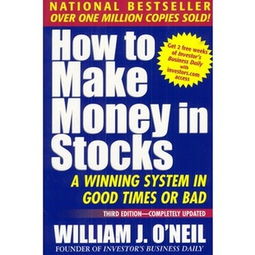How to Make Money Buying Options: A Comprehensive Guide
Options trading can be a lucrative venture if you understand the mechanics and risks involved. Buying options is a strategy where you purchase the right, but not the obligation, to buy or sell an underlying asset at a predetermined price within a specific time frame. This guide will delve into the intricacies of buying options, helping you make informed decisions to potentially increase your wealth.
Understanding Options

Before diving into the process of buying options, it’s crucial to grasp the basics. An option is a financial derivative that gives the holder the right, but not the obligation, to buy (call option) or sell (put option) an underlying asset, such as stocks, bonds, commodities, or indexes, at a predetermined price (strike price) within a specified time period (expiration date).
There are two types of options:
- Call Options: These options give the holder the right to buy the underlying asset at the strike price before the expiration date.
- Put Options: These options give the holder the right to sell the underlying asset at the strike price before the expiration date.
Choosing the Right Asset

Selecting the right asset is the first step in buying options. Consider the following factors:
- Market Trends: Analyze the market trends and identify assets that are likely to increase or decrease in value.
- Volatility: Look for assets with high volatility, as they tend to offer more significant price movements.
- Time Frame: Determine the time frame for your investment, as it will influence the type of options you choose (short-term or long-term).
Choosing the Right Strike Price and Expiration Date

The strike price and expiration date are critical factors in buying options. Here’s what you need to consider:
- Strike Price: Choose a strike price that aligns with your investment strategy. For example, if you expect the asset’s price to increase, select a strike price that is slightly below the current market price.
- Expiration Date: Decide on an expiration date based on your investment horizon. Short-term traders may opt for weekly or monthly expirations, while long-term investors may choose quarterly or yearly expirations.
Understanding Option Premiums
The premium is the price you pay for buying an option. It consists of two components:
- Intrinsic Value: The difference between the strike price and the current market price of the underlying asset.
- Time Value: The amount of time remaining until the option’s expiration date, multiplied by the asset’s volatility.
Options with higher premiums are more expensive, but they also offer greater potential for profit. Conversely, options with lower premiums are cheaper but may offer less profit potential.
Strategies for Buying Options
There are various strategies you can employ when buying options. Here are some popular ones:
- Long Call: Buying a call option with the expectation that the underlying asset’s price will increase.
- Long Put: Buying a put option with the expectation that the underlying asset’s price will decrease.
- Straddle: Buying both a call and a put option with the same strike price and expiration date, anticipating a significant price movement in either direction.
- Strangle: Similar to a straddle, but with different strike prices, allowing for a wider range of price movements.
Managing Risk
Options trading involves significant risk, so it’s essential to manage your risk effectively. Here are some tips:
- Set a Budget: Allocate a specific amount of capital for options trading and stick to it.
- Use Stop-Loss Orders: Place stop-loss orders to limit potential losses.
- Understand Greeks: Familiarize yourself with the Greeks (delta, gamma, theta, and vega) to gauge the risk and potential profit of your options positions.
Monitoring and Adjusting Your Positions
Once you’ve bought options, it’s crucial to monitor your positions and adjust them



